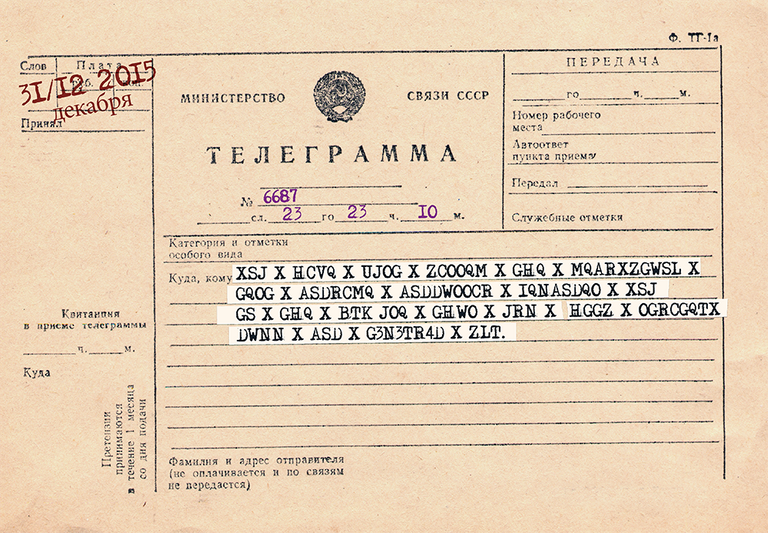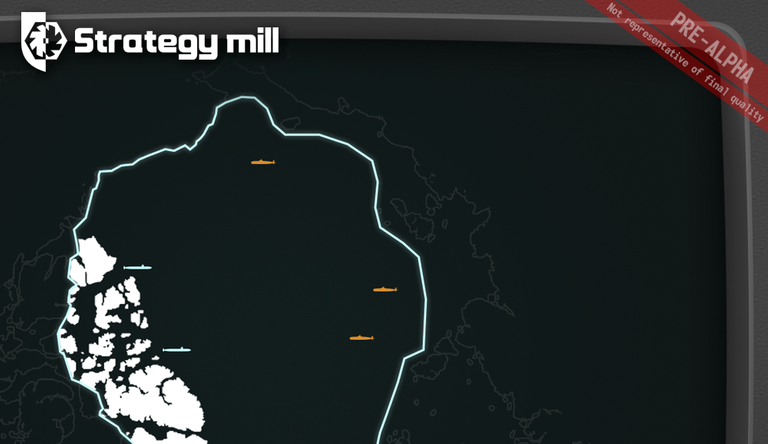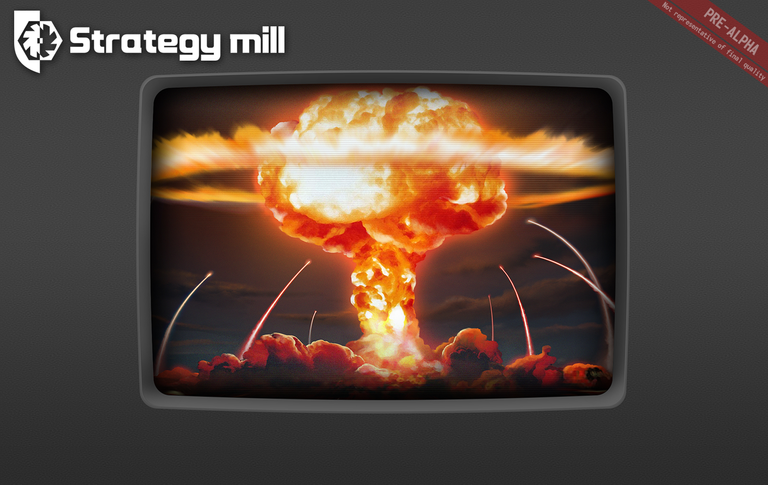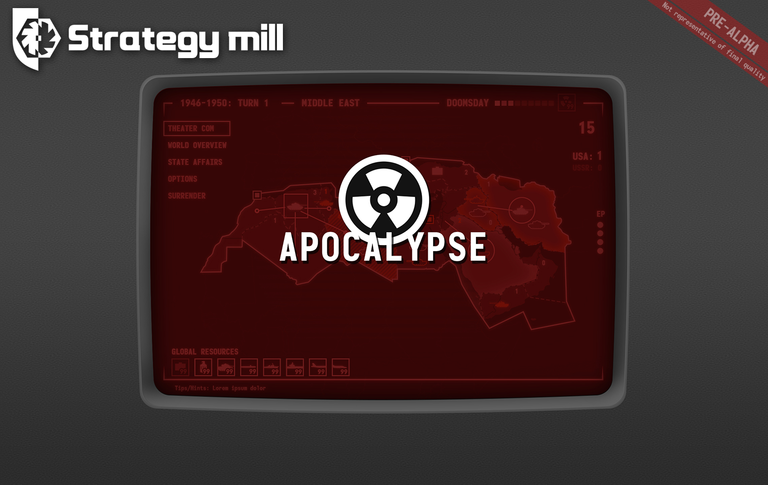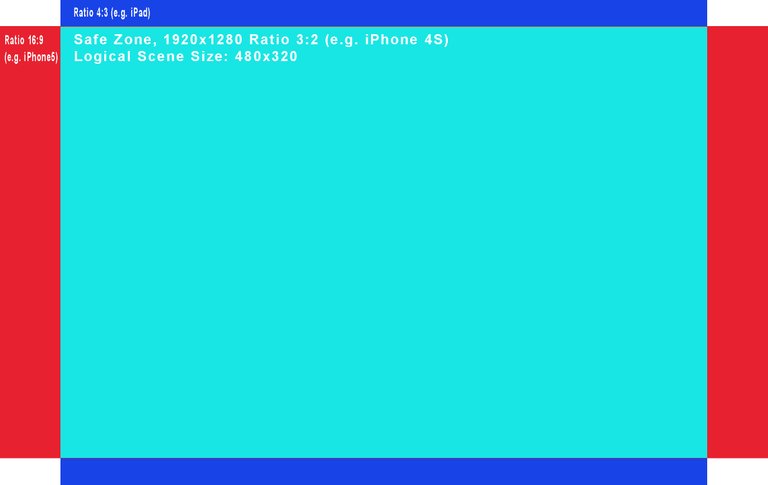Happy New year!
Posted on 2016-12-31
Report Third Quarter 2016
Posted on 2016-11-16
We wish you a Happy New Year !
With the arrival of 2017, we are looking forward to what looks like an eventful 2017. Many awesome things happened during the previous year and we have a lot more planned for the months ahead. Seeing forward to launching our site for Terminal Conflict and showcasing our awesome grand strategy game!
Good luck! Greetings from the Strategy Mill Team!

Reporting on the third quarter and the outlook for the fourth quarter, Strategy Mill's CEO, Gellert Keresztes has announced that a major review has been completed this week of its newest strategy game titled Terminal Conflict.
Pre-Alpha footage has been showcased for the first time of the strategy game at GameStart Asia 2016, in Singapore. “We are working with our partners and will be launching a game site for Terminal Conflict as the project reaches the Alpha testing phase. We want to showcase the amazing work of our skilled developers and share the knowledge with you as outlook for the development continues to make progress. The team is working on the fifth milestone out of eight.
Strategy games are a niche market and there is no competitor with the extensive experience rivaling our team in making this historically plausible game a reality. Our network and talents are far reaching allowing us to make Terminal Conflict a reality”, the CEO expressed.
New Recruitments
Expanding on the team, a new junior coder has been recruited to the development team. Gellert continues;
“Adrian Hedqvist is a rising talent at the Department of Game Design at campus Gotland in Sweden and contributes to the development of Terminal Conflict. As part of our mission to help coders, artists and players connect their passions to careers in gaming, we are bringing meaningful opportunities in the industry.”
Pre-Alpha Focus Group Feedback
Feedback on Pre-Alpha testing has been positive and the demand for a solid superpower strategy game is strong. “The Trump presidency has enhanced demand for Terminal Conflict. When we started development two years ago, we set out with a design where you experience what it feels like to be on the job being the leader of a modern superpower. The grip on authority and the plausible challenges for you to overcome. Being a Cold War game, we have historical records of what decision making in power leads to and could plausibly have led to, granting players unprecedented realism.
Anyone playing Terminal Conflict will experience and advance their skills in decision making of the nuclear armed era. Ultimately it is a global balance of power between cooperation and conflict and deciding when to apply one or the other", Gellert responded to the question on game demand.
Planned Release
The release date for Terminal Conflict has been initially planned for Q4 2016 based on a crowdfunding model, and with the project attracting investors the release date is expected in Q1 or early Q2 2017. “Finally, with Terminal Conflict, you will experience a fascinating human narrative and evolve strategies that help to solve the challenges of our shared future”, Gellert remarked in closing.
For more information, please contact:
Gellert Keresztes, CEO of Strategy Mill
Email: info@strategy-mill.com
We have Begun
Posted on 2016-07-25
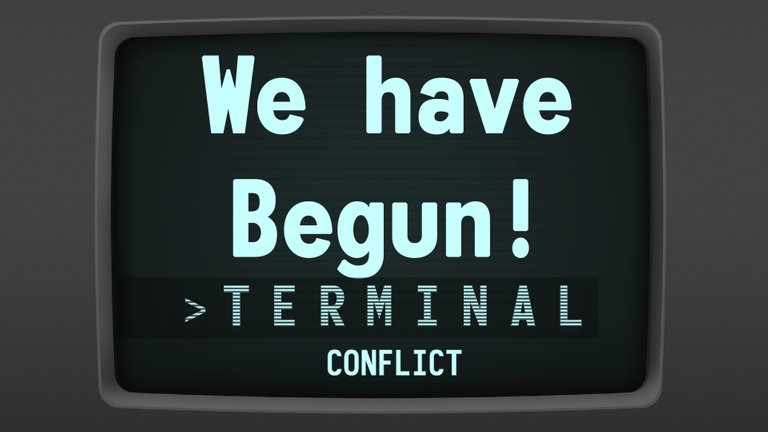
We are thrilled to announce that we have returned from summer vacation. We always find it a good sign, as we work in a creative business, when you can’t wait to get started after a vacation.
It’s especially exciting as this week the Terminal Conflict development team will be beginning a new phase in our game development. The time has arrived to implement two of the most asked about modules in our ground breaking strategy game. Yes, I’m looking at you Economy and Intelligence modules! Make sure to stay tuned as we relinquish to you the front seats in our race towards accomplishment of historical proportions. Our destination and goal, to finally bring to you an all-out Cold War strategy game.
Ladies and Gentleman, welcome to our second module implementation phase! We have begun!
To get in touch with our team, share and comment on Twitter, Facebook or Reddit!
The Video Game Almanac Features Terminal Conflict
Posted on 2016-04-24

Video Game Almanac features an interview with in depth questions about Terminal Conflict and Strategy Mill.
What was the verdict? Read and comment more about it here!
Do you have questions to our team? Send us a tweet, write us on facebook or discuss the topic on our newly opened reddit page!
Terminal Conflict Coming Soon to VideoGameGeek
Posted on 2016-04-05
We have long admired the wonderful gaming community at VideoGameGeek and the hard working and dedicated staff administering this beacon in online gaming discussions. Therefore, we are proud to announce our intentions to provide frequent game information on their website while we explore the feedback of its tight knit community.
Terminal Conflict information planned to be made official on VideoGameGeek:
Primary Name: Terminal Conflict
Genre: Strategy
Theme: Government/Politics, Historical , Spry / Espionage, War - Modern
Mode: Network Multiplayer, Single Player
Minimum Players: 2
Maximum Players: 2
Release date (expected): October, 2016
Platform: PC, Mac
Release Publisher: (Unpublished)
Release Developer: (Unpublished)
Media: Downloadable Content
Language: English
Video Game Rating: (Rating Pending)
Now time to celebrate! Thank you all for your support and your funding you can provide at our Kickstarter!
Terminal Conflict Goes LIVE on Kickstarter
Posted on 2016-03-31

We bring back the Cold War! Plans are nothing; planning is everything in this worldwide strategical conflict. History is in your hands!
Take part in the community and back our Kickstarter!
Sub-Zero
Posted on 2016-03-18
Hey there! This week we wanted to talk about Submarine Warfare during the Cold War. Many accounts describe the submarine warfare between the rival superpowers as a ''cat and mouse'' game. This description stems from the way submarine detection and trailing occurred. The USA and its NATO allies enjoyed a clear technical edge in submarine technology compared to the Soviet Union, specifically in the field of silent running. Reports jokingly mentioned certain Soviet submarines to be so loud that they were heard across the Atlantic (in Hyperbole of course). Nowhere was it more relevant than the Arctic region, which had significant strategic importance in the Cold War.
The arrival of nuclear-powered submarines in the 1950s brought a serious change in submarine warfare. This directly enhanced the speed, depth limit and the endurance of submarines. They grew bigger and eventually some converted into missile platforms. The evolution ushered in the era of the Ballistic Missile Submarine (SLBM) with the capability of firing nuclear missiles. Their lethality, resilience, and silence made them the most survivable component of the nuclear triad. The triad consisted of strategic bombers, land based intercontinental ballistic missiles (ICBM's), and submarine-launched ballistic missiles (SLBM's).
The preemptive Nuclear Strike was a military strategy aimed at decapitating the enemy weapons arsenal to such a degree that the attacking country could survive a weak retaliation while the side struck wouldn't have been able to continue a war. This was planned by attacking the opponent's land based strategic nuclear weapon facilities such as missile silos, submarine bases, bomber airfields, command and control sites, and storage depots. The only deterrence to an aggressors preemptive Nuclear Strike was the possibility of a retaliatory ''Second Strike''. SLBM's therefore, added a counter strategy to the ''preemptive strike''. The ''Second Strike'' doctrine was reliant on SLBM's with their high mobility and near unlimited range posed formidable fear factor to any would be aggressor.
These strategic nuclear aspects made the Arctic a giant sub-zero battleground for submarine warfare. Whoever controlled that geographic arena could potentially conduct that feared retaliatory strike. In celebration of the bravery of the submarine crews, we would like to share a screenshot of the in game Arctic theater. As we advance towards the Kickstarter campaign launch on March 30th, we would like to take a moment to thank you for all the continued support. Happy upcoming day of International Day of Happiness on a very happy Sunday.
JOIN OUR LAUNCH PARTY!
Posted on 2016-03-16
Radiating Warm Greetings! Strategy Mill announces the launch party of our Cold War Title, Kickstarter Campaign, set for March 30, 2016!
Our aspiration is to put the strategic power into your hands and let you command and wrestle with the large-scale challenges of our recent history. We love strategy games, and making a Cold War game means that it is vital to get the most knowledgeable developers in that historical era, and by recruiting BL-Logic, we have done exactly that. Exquisite visual experiences are being done by our industry veteran partners, ScribblePad Studios (USA), and Polywick Studios (Singapore). [Previous developments including League of Legends, Magic the Gathering, Gears of War, City of Heroes, Uncharted 2, The Last of Us, Tomb Raider, Titanfall].
Like a time machine, we let you experience the struggles of the past, and that means enabling you to:
- Command the most authentic Cold War simulator and balance on the brink of mutual assured destruction.
- All aspect strategic warfare - economic, intelligence, diplomacy and military combat.
- Fight in plausible events and with era-specific decisions.
- Make use of historical leaders and individuals.
- Wipe your enemy from the face of the earth by racing to expand the missile gap for a favorable first strike.
Video game design can be a secretive business, but unlike the era portrayed, you’ll be provided with a front-row seat in this major Cold War strategy game development project. The decision-making is in our mind. The key is making you feel history come alive. We feel that it’s a creative freedom we don’t want the players to have to compromise on. Thus, Strategy Mill, will be the first as a strategy game studio, aiming to fully finance a Cold War game with a Kickstarter campaign and make all development in the public eye.
Genre: Turn-Based Strategy
Release date: Late Q2 2016
Platform: Windows, Mac
Developed by: Strategy Mill AB
Published by: Strategy Mill AB
Stay tuned for more information!
Design Table: 14. Design Your Enemy
Posted on 2016-03-04
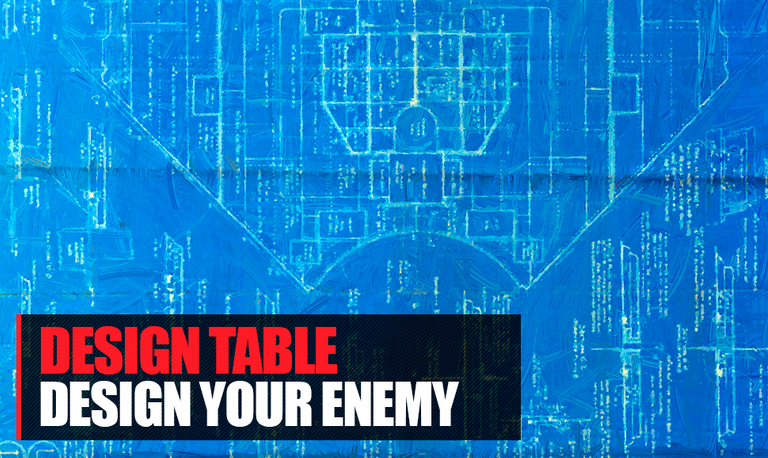
BAM! Another easy win that leaves you feeling like the enemies are potato head bumbling buffoons? Fear not! There is a cure! In today’s Design Table we will take on enemy design.
At the core of the issue is a philosophical question: what makes a good enemy in a game? My answer would be that it depends on the rule set. As the rules create the base for player design, it also sets the framework for the enemy design. I like to divide them up into three main enemy types.
1. The Bot Army
The least “sophisticated” of enemy types, bots are very common in the fauna of scripted AI. These are usually programmed to mimic human gameplay behavior, but common for them all is that they use the same rule set as any player would. They inhabit the game universe and are usually easily scalable in challenge by a simple multiplication of their numbers much like an army. Usually requiring a low to medium investment in coding time, with effort, they can be given higher level of responsiveness and awareness, though usually it is not required as bots are commonly cannon fodder. Perfect for tutorials, farming, and other similar design formats.
2. The Cheating AI
Let us make no secret about it, with some God Mode growth hormones added, a bot could evolve from merely being a mindless minion, into gaining abilities that go outside of the rules' framework the player is bound by. However, repeatedly losing to a Cheating AI will undoubtedly earn your game some well-deserved rage. Fret not; this is fixable with a little gardening by trimming down the cheating habits of the AI if it gets too far ahead. The technical term for this is “rubber banding” and it’s a common feature in multiplayer games where an AI replaces players who disconnect as a regular bot would be an all too easy target.
3. The Boss type AI
These specimens are the actual mechanics used to defeat them. A commonplace where specific challenges need to be solved, often in a particular sequence. They may contain elements of puzzles, patterns, memory tasks, or built-in defeat mechanisms. Usually combined with a time pressure mechanic or a stress environment, these are commonplace and bring much needed variation for shooters, RPGs or MMOs where grinding heavy or farming heavy gameplay would render a game too monotonous. It also makes every fight something to remember and adds an element of challenge that is about figuring out the tricks and quirks of each enemy fight, continuously developing and honing your tactics.
The key is to choose one of these and stick to it. Most projects cannot afford several types of AI and although doable, I would say try to master one type of enemy. Consider which would work best with your game environment and rule set.
Design Table: 13. Interesting Facts
Posted on 2016-02-26
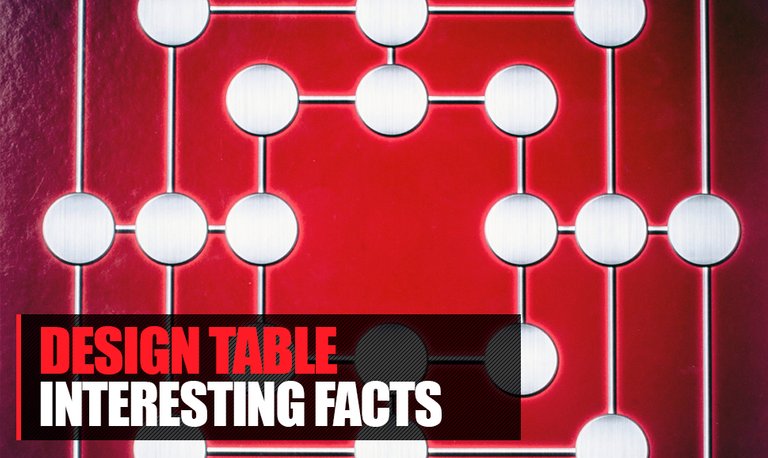
Player experience. We know it is important, but what captivates the minds of your fellow players and have you done a good enough job to captivate their interest? In today’s Design Table we will take on that challenge!
Hey there!
Welcome to a new addition of Design Table. To start off, let us be clear that as game designers, we need to be in-tune with ways where the human minds can be remarkably similar. Not in what we experience or how we experience it, but in what draws people and gets them to be interested. Before you dismiss this as a hippie conspiracy, know that there is quite a bit of science done in the subject.
Have you ever noticed how music, TV shows, books, artwork, or in general, story telling has a particular rhythm and draws their audience in, captivating them? This is in fact a process and can be broken down into several parts. There is a building of perhaps anticipation; there is a delivery that draws your attention to a piece, a tone, a face or an action. There is breathing space not to overwhelm and then there is a final crescendo, a finale to give a lasting memory captivating your interest to the point where you can be fully immersed. Coincidence? Hardly! It is great design. What is this mysterious process? There is no mystery about it, it is simply a process of design that I argue should be part of every game designer’s toolbox.
How to draw an interest curve
An interest curve has two main components that you are going to plot. First and foremost, the game time/progress, and second, the interest level. This is how captivating you find a particular level or world but essentially, you can apply the rating to any time flow of the game. The ratings are:
0. No interest - This rating you aim to avoid as to leave the player wanting more. Even after the endgame, you would like players to at least keep their curiosity for replay value. If you notice that, you are reaching zero, than it’s a sign that this section of the game needs redesign.
1. Curious - This is essentially the level most new players will start at and a good starting point for any tutorial or game start. As a designer, try to harness that curiosity and build on it. This level is also an ideal ending point leaving the players curious and wanting more. It’s a good setup if you plan to do expansions, sequels and also it usually means the game will be replayed.
2. Slightly Interested - This level is past curious, when a player has an interest already in the story or some of the mechanics, but sees the tasks still as a basic chore rather than a game. Farming, daily quests, harvesting resources or reorganizing units, weapons or gear, and simplified tasks belongs to this bracket. This can also be a good level in a game after a very draining or stressful task. It’s important to give the player time to process, get some reflection and digest what has happened, but be careful to force it upon players. Recuperation is very individual and giving players the means to continue when they want will make this part seem very fluent and natural.
3. Moderately Interested - Now you have captured the player and given a task that seems rather captivating and interesting to further a reasonable goal. This is the normal level of the game. Where a player is comfortable but not heavily challenged.
4. Highly Interested - Challenge the players, their imagination and their intellect. This gives a problem to solve that is harder than the rest of the normal game-play. Boss fights, challenging puzzles or difficult skill play, perhaps something story-wise outside the norm happenings. Level endings of world progression usually ends here. For other games, this is the story advancing towards the endgame which keeps the player on their toes.
5. Fully Captivating Interest - The final revelation, the crowning of the story, the big finale, the crescendo, the main BOSS fight, the top rate fight, the hardest challenge or the mother of all mother explosions! This should be achieved at least once in each game and if anything this is, the ONE-thing players will remember when they have played your game.
When you have plotted each part of your game on a chart, connect the dots to gain a curve.
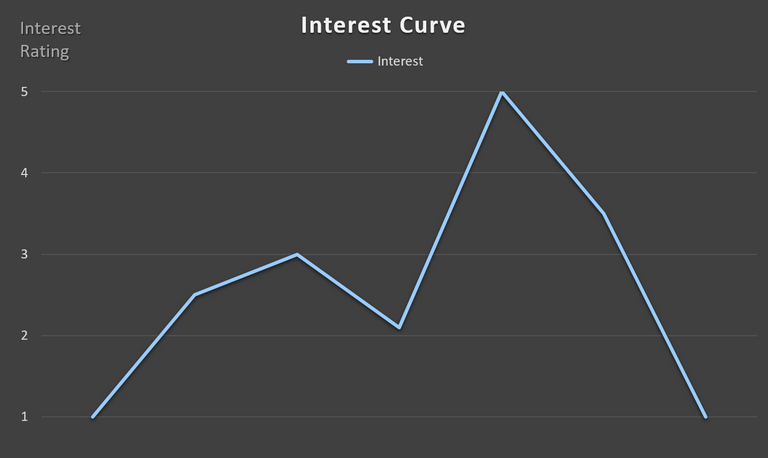
Using the Interest Curve
As a designer, assign to each project your desired interest curve. There is fantastic value in seeing your team, play-testers and others draw their interest curve for your game. Having it as a natural part of the play-tester's feedback model will gain you valuable experience and essential feedback for project improvement. Comparing your intention with the experience of others, you will quickly have a chart over how close the execution came to your design and where more needs to be done to achieve your desired level. You will see where you need to tone down or tune up the elements while at the same time it will give you a toolset for reflecting concrete levels of player interest.
And that's it for Interest Curves! This concludes this week's Design Table. If you would like to send in a question or write us feedback on today’s session, you can either do it via Twitter, Facebook or email and we will possibly make them part of the next series!
Design Table: 12. Project Leadership
Posted on 2016-02-19
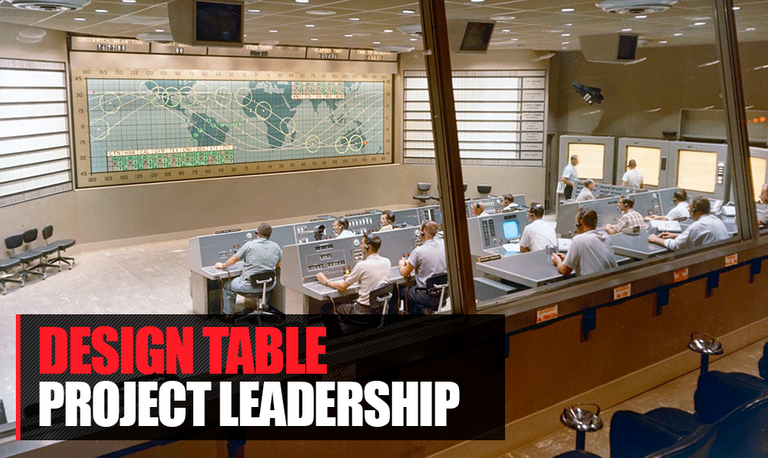
Hey there! I got a lengthy email last week asking me for input on a development project and I decided to take you on a ride into the project lead work in today’s Design Table. It’s a role that is usually not very well discussed and many live with the belief that it’s some sort of natural born skill. Forget that, there are things that work and things that usually don’t work. Teams can be so different, so it’s all about getting to know the people you work with and building up whatever works for you. Be meticulous and don't give up and soon you and your team will lift off to do great things!
To give you a little background, the questions was about how to manage people with such different skill-sets and diverse backgrounds. When you work with games, be comfortable with the thought that you will at some point work with: designers, artists, programmers, quality assurance managers, community managers, people in the legal department, producers, composers, sound engineers, marketers, publishers, business people, public testers, fans and gamers. To get all these individuals rocking to the same tune, regardless of your skill-set, make sure communication is your sharpest one!
All teams face similar challenges
Even thought at times it might seem lonely and you might think that you are the only one struggling, be assured that all teams face the same sort of obstacles and challenges. If you trust the talents of the crew, mainly it is an issue of teamwork, overview and time management. Game development is an artwork and like any good art, you need to let tasks mature with good ideas. Let them mature too long and the thing you aimed to design becomes obsolete and you run too far behind schedule. Too short and you will not get the rich flavor you wished for.
Learn to do a time estimation for everything as a project leader! Milestones are your way to set a broad vision. If you estimate something will take a month, break it down to two-week goals. Split those goals down ever further into detailed tasks. Only then are you ready to present them to the rest of the gang. Over time as you do this you will get a genuinely respectable understanding of what your team and you are able to achieve and create an atmosphere where everyone understands clearly what is expected of them. Be meticulous as if you were running the space program and it will reward itself in the end.
What is a task?
Any activity taking between 30 minutes and three days to complete in game development is a viable task. Started issues should never sit around long periods in waiting. If they do, than you have not broken down the task into small enough components for your team. Breaking those issues down into smaller segments will allow you to see possible bottlenecks, issues or schedules blocking one another or other types of errors but do not overdo it. Anything shorter than 30 minutes is not a task, it is an errand and ultimately a micromanaging approach will create a ceiling for the creativity and the patience of your coworkers.
What about project management tools?
Absolutely! I work with a multitude of project tools and there are many good ones that can be tailored to suit any project need. Do a search and find one that works for you as there are many excellent free ones and even very advanced ones for just a small fee usually depending on team size!
Fika Breaks
Lastly a VERY important thing to manage is to schedule breaks or pauses. In Sweden we call them “fika” breaks. Allowing your developers and crew to get some fresh air, perhaps a bite to eat and get to stretch their legs for a few minutes in each hour will positively affect not only morale but also all creative work. Think about it! How many times has someone uttered the phrase “we discovered this brilliantly innovative invention by doing a marathon sitting without toilet breaks”?
This concludes this week's Design Table. If you would like to send in a question or write us feedback on today’s session, you can either do it via Twitter, Facebook or email and we will possibly make them part of the next series!
Meet Ata
Posted on 2016-02-12
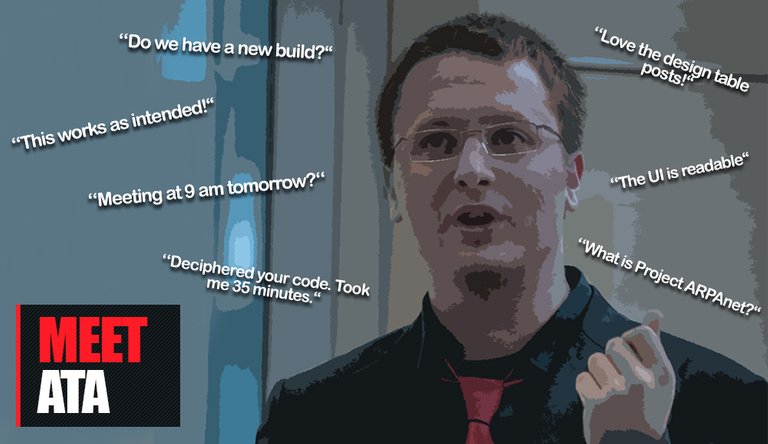
Greetings to all of our readers! I am Ata, a 23 year old student and a German Turkish dual national! Currently I am studying German Translation and Interpretation at the Hacettepe University in Ankara, Turkey. Yes, summertime is pretty awesome here. Especially the area around the Aegean Sea!
My roles in the company are Public Relations Specialist and QA Software Analyst. My responsibilities on the project include working with our talented QA lead Davide and cooperating with our awesome Community Manager Gabriel. My go-to hobbies are gaming, cycling, and travelling. Some of my other areas of interest are military technology, history, politics, and economics.
Beside being a student and developer, I help manage the Magna Carta NGO which focuses on EU projects as the Vice President. Additionally, I also work as a local chapter leader of Creative Coffee in Ankara organizing monthly events with speakers and bring creative and entrepreneurial people together.
We as developers love working on a concept of a game and materializing it from simple ideas to an actual piece of software. Ultimately our goal is to engage the player in an experience that we think they will love.
There are many factors that come in to play that can hinder the user experience. The first is encountered at the game design stage. When games are developed in isolation one of the most common issues is the fact that there is no player feedback to assist in the development direction of the game. Understandably iteration in this case is critical to the success of the project and the experience of the player.
The game design must be looked over and over as much as possible and include constructive criticism. This helps to break the isolation and give another view on the issues a game faces or can face. The second important factor that can hinder the user experience is stability and optimization. Game development should therefore encompass enough time for a polishing process before the game reaches the hands of the player.
This is exactly where Play Testers come in to play. See what I did there? Play testers are right in between the realm of a QA tester and a PR person. Great attention to detail is needed to successfully complete the QA part of the job which is the more day to day bug reporting and bug fixing process. While on the other hand you must have great empathy to see the product from an end user experience. For example, once the user interface developers work on the UI a play tester can see if it is readable and easy enough to understand. When the core gameplay is implemented, a play tester can see if the game is easy to get into or hard to master. As you can see, the secondary task of the play tester is way more complicated than expected.
Putting yourself in to the shoes of a first time player is not as easy as one might think especially when you can be in a project for months or even years. Additionally, the play tester can also handle PR and Community relations very well and is more likely to answer questions about game mechanics in detail because of how much he focuses on the end user experience. I hope this has given the reader an insight of how critical play testing and the stability of a game is for a game project.
Thank you for your time. This concludes today's version of the Design Table. If you would like to send in a question or write us feedback on today’s session, you can either do it via Twitter, Facebook or email and we will possibly make them part of the next series!
Encryption Challenge Series
Posted on 2016-02-05
Hello and welcome to our new Encryption Challenge Series! In this segment, you will be able to solve encryption challenges from the Cold War and by outwitting the best minds of the time period you will be rewarded with glimpses into our developing project!
Your Keys are: K = E ; N = D
Next week on Friday the 12th of February, will feature a new episode of our praised Design Table series. Playtesting will be the topic explored in detail.
Don't forget to stop by our social media pages: Twitter, Facebook or email us!
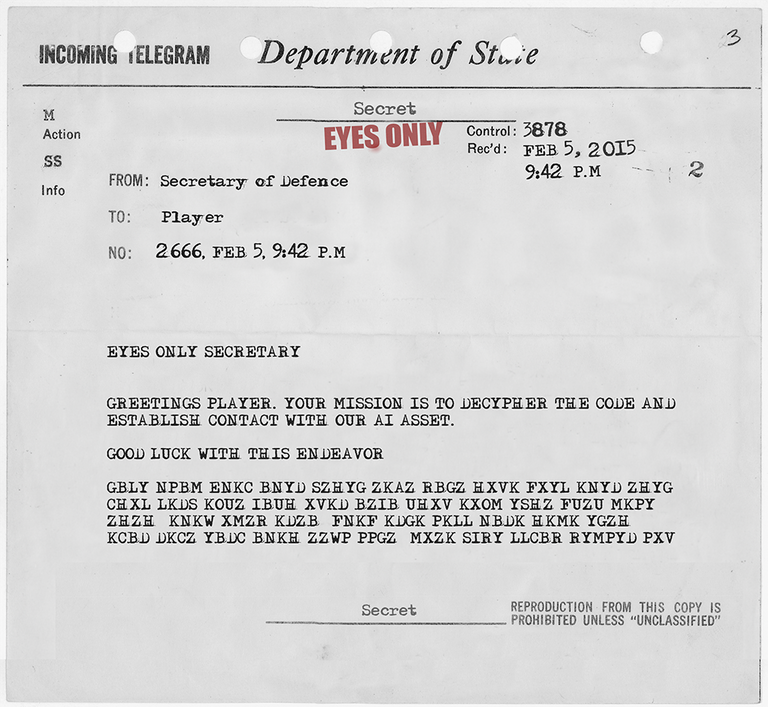
Design Table: 11. Simply Interface
Posted on 2016-01-29
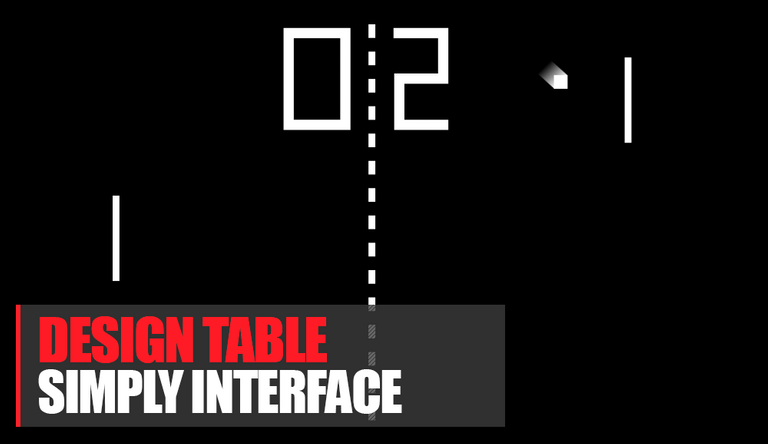
Hello there! Grab your popcorn and settle in with our latest Design Table! This week we'll be going over the inns and outs of an interface design.
Know your Dimensions
Scale is always a hotly discussed topic and we frequently get questions regarding resolutions and dimensions. What is important is that no matter what type of a software you are designing, the dimensions are going to be the foundation. Almost any redesign will require substantial work to convert to a different dimension so therefore consider what your target dimension will be.
If you aim to do a multi-platform software, my personal favorite is to design for a 3:2 resolution because that can be augmented with supports, so called skirts. By adding skirts on the sides to a base dimension any other dimension can be generated without distorting the base design. Flexibility is the name of the game while we are all waiting for ONE universal resolution standard to rule them all. By popular demand here is a simple guide reference of how skirting the 3:2 resolution is done.
Consider your content
Settle with the thought that there is no solution that can cater to all needs and therefore design according to your content. What is the most important content the player needs to pay attention to? Consider keeping the players eye focused on that and situating elements on the screen in a way that helps keep that focus. There will be information that is not essential to show.
Keep it simple
Focus on essentials and aim to strike a balance between giving enough information for the player to understand what needs to be done and intuitively react but not to the point that the player drowns in information. Know the fact that what for the player feels like simplicity is the hardest and takes the longest to achieve.
Look at the competition
Research other interfaces to see what works for them and aim to do something better and different. Copying someone else will simply limit you to at best replicate what ever they did but doing so, you will fail to understand what works and why. Don’t be afraid to experiment and don’t forget to research not only successful games but also failed games. Learning from other people’s or projects mistakes is far more cost effective. Also keep in mind that the best ideas usually come from what at first seem like mediocre if not whacky attempts.
Natural flow
Human beings have a pretty well and intuitive grasp of where certain elements should go and how things should flow across the screen.
I get a fair amount of questions from other designers if I have a trick that I use when looking at flows in games. My foremost tip is to take your clues from nature. Flow on a screen naturally should happen from top to bottom because everyone is familiar with gravity. In real life things move naturally towards the ground. It's just intuitive, much like how reading text is done on the screen the same way as when reading a book. By getting to know your audience you will discover what they find instinctual and get a comprehension of what they view as an expected flow. What will work well in the US or EU is not a guaranteed success elsewhere. Arabic countries read from right to left, thus many players naturally also view an interface from right to left and this is something you should not ignore if you expect a large segment of your audience to belong to that culture.
Other issues to consider can be that there are quite a few players that are color blind. Using color pallets that are hard to distinguish from one another might therefore render your game unplayable by a fairly large segment.
Another horribly dreadful mistake is to use sounds only to convey danger in a game. This robs people who have difficulty hearing from a sensory input. Make sure to use animations and movement to a maximum, much like in nature.
Lastly, as an example from real life, consider that there are going to be people that simply forget their headphones and are playing your game while commuting to work. Deprived of sound, they will die horribly time and time again making fantastically terrifying faces on the subway. Actually, that is kind of entertaining but if not for anything else, for the sake of civility and social cohesion, please consider a better design!
Design Table will return with a new episode in two weeks, as next week on Friday the 5th of February we invite you to join us in celebrating the launch of our "Encrypted" puzzle series! Can you beat the best minds of the Cold War era?
Don't forget to stop by our social media pages: Twitter, Facebook or email us!
Meet Davide
Posted on 2016-01-22
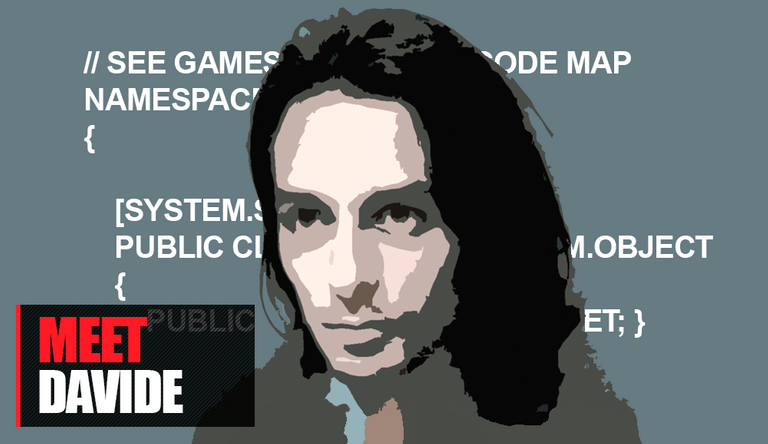
Hello all! My name's Davide Benedetti and I am the QA leader for Project ARPAnet.
As you might have guessed from my name, I hail from Italy, although I am partly of Argentinean descent. I was born in 1990 and have since lived in a small town at a stone's throw from the Adriatic Sea. I have never had to travel long distances to enjoy summer at the beach, a luxury some people would probably kill to have.
I've developed a keen interest in computers since my wee years of childhood. I was three or four years when my brother was gifted an Amiga and I sure got addicted, to the point that, according to my family, that's primarily how I taught myself to read.
A child's perspective of the world is something that we'd like to savior again from time to time, as it's an amplifier of feelings and sensations we can't even reproduce anymore. That was the case with computer games for me: they were magic.
In high school, I attended a school that had none of these subjects and almost no mathematics, and programming was unheard of. Today, I'm a computer engineer reclaiming my original fascination as a child. Later in life, I've developed other interests: playing the piano, composing, a passion for history and languages.
In short, I excel in flexibility and adaptation. Whether it is innate or thanks to my early interest in computers, I am always eager to learn something new rather than to specialize - breadth before depth is my motto. Knowing a little of everything may not be good for very specific tasks, but it sure yields a synergy bonus, because you can relate concepts from very different subjects. In fact, I apply that skill every day as QA leader, soft- and hard-coder, reflecting my nature.
As QA leader, I coordinate testers in what, when and how to test. Testing is a fundamental part of any software engineering process. I make sure that only once a task undergoes QA supervision and is greenlighted that it be stamped as DONE. Such early prevention may to some be tedious, boring and it may appear unnecessary, but it's like many other preventative measures; it might be a minor annoyance, but you don't realize what life-saver it is until you don't have it anymore.
What does it take to be a prolific QA tester? Essentially, it is attention to detail - the devil is in the details and bugs aren't any different. The will to destroy your own game, or others' games, if you prefer. Not destroy as in shatter your software in small bits and pieces (hah... bits... get it... okay), but as in exploiting every function the game offers. If you've ever had that “gotcha” feeling when discovering an exploit that the developer hadn't foreseen, then get a magnifying glass and hop onto QA! Your future will be bright!
With a passion for pushing every game to its limits, all you need then is the ability to communicate the flaws. Detecting bugs is only half the work but you still need to report them for others to squish them. Therefore, the ability to write descriptive and detailed reports is also essential.
With that said, how do we roll in practice? In our development process, each meaningful activity is a task. Each task goes through five sequential phases: first is "To Do", where the task's attributes are outlined and the task assigned to someone. Then comes "In progress": the assignee has begun working on it. Once they thinks the task is completed, it's submitted to "To verify". There, someone from QA brings the task to "Verifying in progress". We test the task and then two things can happen. Either the tester is not satisfied with this iteration of the task and sends it back to "To Do", much to the joy of the assignee, or he deems it fit to go into the "Done" box and that task is then labeled Done.
This means that QA holds a great responsibility. It's up to us to control progress. Everyone else in the team works under the assumption that a task that is labeled Done by QA is indeed done and working as intended.
With a programmer background, I also see the gap between the muffled worlds of university and reality. Code is never experimental, functions are always class room utopian, code classes have ideal names and attributes. In the real world, where your average project is 20 times the size of whatever you saw in your programming classes, is can be quite a humbling experience. It's easy to get bewildered out there, so just remember that small steps are the way to go.
Hope you got an idea of who I am and what I do. Have a nice day!
This summarizes this week’s Design Table. Next week, our topic will be about Virtual Interface. If you would like to send in a question or write us feedback on today’s session, you can either do it via Twitter, Facebook or email and will try to make them part of the next series!
Design Table: 10. It Takes Two
Posted on 2016-01-15
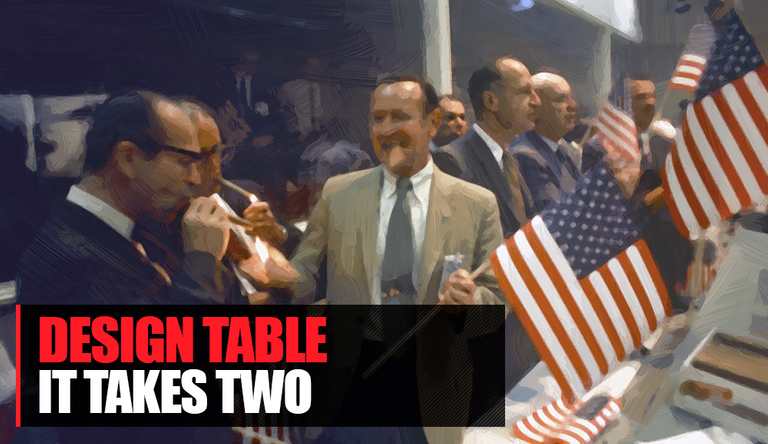
Playing games is awesome, but what is even better is to share that with someone else! Today in our Design Table, we will explore something older than dinosaur dirt; cooperative games!
The euphoric joy of a successful coordinated boss takedown echoing over the chats, or the completion of a dungeon or a triumphant arena play. Cooperating and succeeding as a team is rewarding indeed. The loot or the increase in rank just adds a bonus to the forging of social bonds. Co-op in many people’s eyes is therefore the ultimate form of gameplay.
There are those in the business that would argue that a great co-op game is in the mechanics but cooperation is for me all about communication. The better tools I provide with my design for the players to cooperate, the more they will get out of the experience.
Breaking the Ice
What about the trolls you might ask? Ask yourself what kind of players you want for your game and design accordingly! Are they going to be friends playing or are they strangers? Remember that for games where strangers have to cooperate, you need to design some form of an ice-breaker. You might not noticed but in some games where strangers play with one another, player trolling has evolved as a social form of an ice-breaker.
Accept that designing cooperation means different game genres have more or less accepted norms and as a designer, you have to consider this. If we generalize, currently FPS games will have a definitive “rougher” voice chat community than say a cooperative RPG or perhaps an MMO. Is this something you want for your game and does it benefit your design?
Synergy vs Antergy
Another things to keep in mind is Synergy vs Antergy. Synergy is achieved when combining forces makes greater productivity with the entire team being greater than the sum of its parts. Having a tank, a healer and a DPS makes a great team with each fulfilling a niche role in essence making 1+1+1= 4. Antergy has the opposite effect. With an antergy design, each additional team member will be a drag on the entire team essentially making 1+1+1 = 2.
If synergy is great for role specific gameplay and for expanding the number of players in a cooperative team, antergy is good for getting teams to a team size you designed for and balancing out the cooperative play to be competitive. You will punish the players slightly for bringing on more people than they should have or for stacking only a certain specialist role, yet without at the same time excluding anyone with a hard limit.
This summarizes this week’s Design Table. Next week, our topic will be about Quality Assurance. If you would like to send in a question or write us feedback on today’s session, you can either do it via Twitter, Facebook or email and will try to make them part of the next series!
Design Table: 9. The Name Game
Posted on 2016-01-08
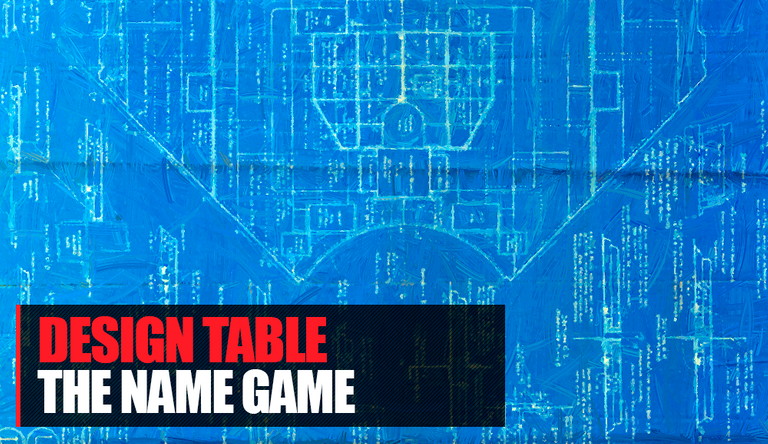
Characters, items, trinkets, weapons or gadgets, naming things in games is not only essential it is indispensable. With that, let us launch this year’s first Design Table!
Naming, the art or transforming seemingly simple icons, statistics or commonplace virtual models into valuable virtual items, desirable objects or legendary characters. It seems like a tall order to take on at first, especially if you start thinking about all the good names out there that are already taken. I get asked all the time “How can I create a good name for my character, environment or item, that tells a great story?”
This can be a good perspective but the aim of game design is often not to tell a story. A far more powerful and better experience in my view, is allowing the player to imagine their own story for a character, environment or create their own desired usage for an item. It will not only provide multiple dimensions, it will most definitely makes even seemingly “worthless” items a thing of scarcity and desire. Just feel secure in that everything we do is aimed at providing the best experiences for our gamers. It might be contradictory as ones experience is imaginary but as we talked about in Design Table Episode 1, game designs are judged by the quality of imaginations that they create.
Let me exemplify what I mean. Imagine I offer you three characters to choose between with different ranks. “Seasoned Leader”, “High Master” or “Dominator, The Master Ruler”. It’s evident right from the get go, that even if all three names fires of one’s imagination, the latter seems to be in a higher hierarchy. It not only sounds more official, it seems to almost play a bigger role. Please keep in mind that in any game, players will try to structure the world, environments, characters, gear and items. It can be very powerful to use this to your games advantage and build your design on creating experiences on these sorts of rough hierarchies.
Many games sadly miss out on the great value naming can provide. I suggest considering it because it also requires very little development time. Value in a game is not only in it’s innovative mechanics, in fact many games people might consider mediocre would become absolutely legendary and brilliant with just a slight tweak of their naming. So what is my suggestion? Is there a way to train up ones naming ability?
Absolutely! Valve, Riot Games, Blizzard, Bethesda, Gearbox and others have plenty of games with legendary and solid naming regiments, often accompanied by a color system. Try to rename each item, character or environments in your favorite game! You will be surprised how much fun it is and how easily you can change the experience with the naming. How easy it is to evolve from one type of an experience into another.
This summarizes this week’s Design Table. Next week, our topic will be about Cooperative Games. If you would like to send in a question or write us feedback on today’s session, you can either do it via Twitter, Facebook or email and will try to make them part of the next series!
Happy New Year
Posted on 2016-01-01
Happy New Year Comrade!
With the arrival of 2016, we hope you are well rested and enjoyed your holidays. Many awesome things happened during the previous year and we have a lot more planned for the months ahead. During the holiday season, our team has been working tirelessly on our upcoming project. You have been able to follow some of our thoughts about game design in our Design Table series, which will be returning on January the 8th. With a new year, comes new challenges and here is a telegram for you. You will have to grasp basic decryption techniques to read the message. Take this matter into your hands with confidentiality!
Here is your key: C=A
Good luck! Greetings from the Strategy Mill Team!
